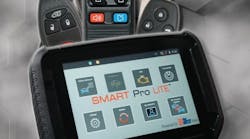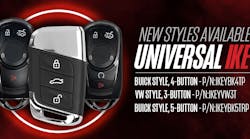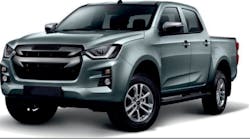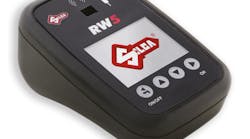Is it just me, or are the new “security requirements” that manufacturers keep coming up with getting a little old? By now, we should all realize that all these new barriers to prevent automotive locksmiths from programming keys to new vehicles do nothing to enhance security and simply an attempt to force car owners to come back to the dealerships and pay exorbitant prices for keys and fobs to vehicles that they supposedly already own.
I would hope that the auto manufacturers would “wake up and smell the coffee,” and learn from the mistakes made by John Deere. If you are unaware of the problems that American farmers are having with John Deere, here is a link to one of many articles addressing the issues: https://pirg.org/edfund/resources/john-deere-repair-software/
In a nutshell, as farm equipment became more computerized, John Deere made their software proprietary; on many high-end farming machines, often costing nearly half a million dollars each, the farmers own the machines, but John Deere retained ownership of the software that allows the equipment to operate. Any modifications to, or changes in, the software require approval from John Deere and had to be done only by “authorized” John Deere technicians. Tech-savvy farmers who tweaked or customized the software on their own found their equipment shut down remotely if John Deere discovered the modifications. This issue has cost American farmers an estimated $4.2 billion dollars so far. And of course, those costs get transferred to you and me in the form of increased food prices.
The reactions of the farmers started out small but has grown into a major issue in the farming industry. Even though John Deere sales continue to increase, the threat of a multi-billion-dollar legal settlement looms over the company and has had the effect of driving sales to John Deere competitors. This controversy is far from over, but right now it appears that the farmers are winning their battle to be able to repair their own equipment.
Of course, farmers are much better organized than automotive locksmiths, so we don’t really stand much of a chance of changing these same tactics as they apply to automotive security, but the consumers are not all ignorant of these issues. I have been getting more referrals from dealers in the last year or so and getting more work from dealerships as well. We will see if the manufacturers will change this trend in the future, but as for me, I have suddenly found myself contemplating membership in NASTF (National Automotive Service Task Force) after years of independence. And at the ripe old age of 72, I’m weighing the options of retirement against the costs of having to becoming a “codesmith.”
The two most recent changes come from GM and Ford, and like the earlier efforts from Chrysler and Toyota/Lexus, the goal seems to be to do everything possible to prevent vehicle owners from having their vehicles serviced outside the authorized dealer network. Both GM and Ford signed on to the SDRM (Secure Data Release Model) effective with the 2020 model year. As a result, automotive locksmiths who are not members of NASTF cannot program keys, both in “all keys lost” situations and in “add a key” situations, without obtaining security data through NASTF and/or the manufacturer network.
If you are a member of NASTF:
If you are currently subscribed to the NASTF network, you should already have been notified of these changes. Programming the vehicles equipped with these new systems will require the normal verification process and record-keeping already required for other NASTF functions. The use of a “pass-through box” (J2534 compliant) is necessary to transfer data between the vehicle and your programming device. In addition, some vehicles use the “CAN FD” system, and your programmer will need to have CAN FD capabilities built in or use an external CAN FD adaptor. CAN FD is a version of the CAN system that was adopted by the automotive industry around 2004, but with the new “Flexible Data” system. In the CAN FD system, the speed of the data exchanged between the vehicle and the programmer will vary during operation. Some older machines can be updated to the CAN FD system with an adaptor but many of the new machines incorporate the CAN FD software into the basic operating system. (NOTE: Using a CAN FD adaptor on a machine that has on-board CAN FD is unnecessary and will prevent the machine from operating correctly.)
If you are not a member of NASTF:
As I mentioned earlier, I am not a member of NASTF, but I have been contemplating joining. In fact, I probably would have joined long ago if the application process was not such a long and drawn-out process requiring months of waiting for the application to be approved. I have started the process several times, but in each case the bureaucracy and inefficiency of the application process, coupled with the onerous record keeping requirements, has caused me to drag my feet long enough for someone to come out with a work-around for whatever system inspired me to want to join NASTF in the first place. In short, if there is a work-around for NASTF, that’s where you will find me.
And once again, I am seeing workarounds coming out that make me re-think my ideas about NASTF. In the case of the Ford system, Advanced Diagnostics has recently introduced new software designed to deal with most of the problems associated with the new system. This software allows automotive locksmiths to program fobs for Ford vehicles that are equipped with proximity fobs, both in “add a key” situations and in “all keys lost” situations. This system also includes software routines to help deactivate the alarm on vehicles that have the alarm activated. All of this is done without accessing NASTF or the dealer system, but using the system does require an Internet connection. As of the time I am writing this, there is no good work-around for an “all keys lost” situation for vehicles equipped with bladed keys, but hopefully that will become available soon. In the meantime, cloning can solve most add-a-key problems.
The GM situation is somewhat different in that it also uses the CAN FD system on many vehicles. For those vehicles, the folks at Auto Pro Pad have a solution that works around a pre-paid “CAN FD Credit.” These CAN FD credits work much like a “Token” and one credit is required for each operation. There is a delay time built into each system of 10 minutes, but recent changes to some vehicles have updated the delay time to 2 hours. As a general rule, if the vehicle has been back to the dealer for service after Feb. 28, 2023, the software may have been updated to a two-hour delay. If you encounter a two2-hour delay, it is imperative that you use a battery maintainer. If the vehicle voltage drops below 12.5 VDC at any time during the process the Body Control Module will enter a “sleep state” and you will have to start over. (The light on the start button will also turn from green to amber.) If you have an Auto Pro PAD and think that you will be encountering these vehicles in the near future, you can buy credits in advance, and there are discounts for bulk purchases of five or more credits.
GM Vehicles using CAN FD:
Buick
· Envision – 2020 and up
Cadillac
· CT4 – 2020 and up
· CT5 - 2020 and up
· Escalade – 2021 and up
Chevrolet
· Bolt EV - 2023 and up
· Bolt EUV - 2023 and up
· Corvette – 2020 and up
· Silverado – 2022 and up
· Suburban - 2022 and up
· Tahoe - 2021 and up
GMC
· Hummer EV - 2022 and up
· Sierra - 2022 and up
· Yukon / XL / Denali – 2021 and up
Because both of these workarounds are new and subject to change, I will not go into detail here on how each one operates, but rather I will refer you to the tech support features that both Advanced Diagnostics and Auto Pro Pad have on the web: https://www.advanced-diagnostics.com/ and https://www.autopropad.com/. As with all new software, be prepared for glitches to appear from time to time until the systems get thoroughly tested and implemented.






